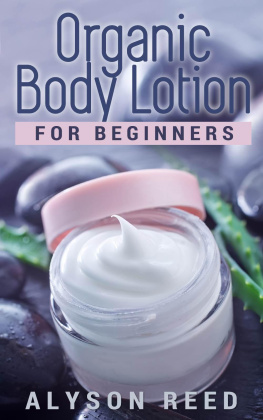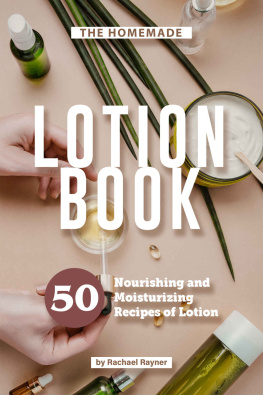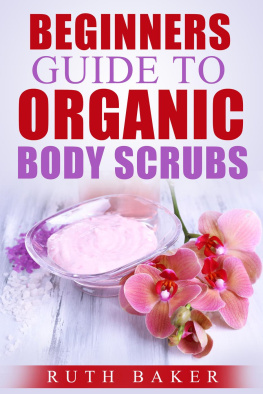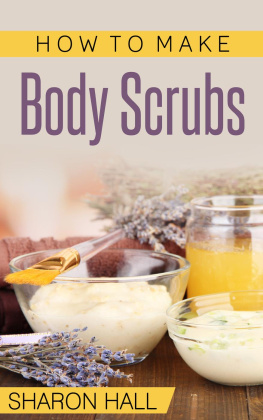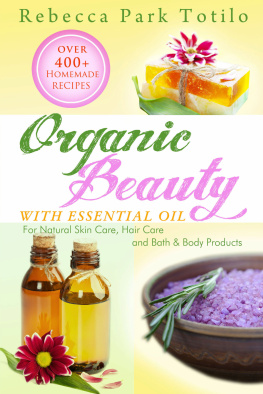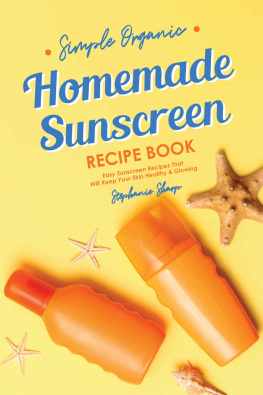Reed - Organic Body Lotion For Beginners
Here you can read online Reed - Organic Body Lotion For Beginners full text of the book (entire story) in english for free. Download pdf and epub, get meaning, cover and reviews about this ebook. year: 2014, genre: Home and family. Description of the work, (preface) as well as reviews are available. Best literature library LitArk.com created for fans of good reading and offers a wide selection of genres:
Romance novel
Science fiction
Adventure
Detective
Science
History
Home and family
Prose
Art
Politics
Computer
Non-fiction
Religion
Business
Children
Humor
Choose a favorite category and find really read worthwhile books. Enjoy immersion in the world of imagination, feel the emotions of the characters or learn something new for yourself, make an fascinating discovery.
- Book:Organic Body Lotion For Beginners
- Author:
- Genre:
- Year:2014
- Rating:3 / 5
- Favourites:Add to favourites
- Your mark:
- 60
- 1
- 2
- 3
- 4
- 5
Organic Body Lotion For Beginners: summary, description and annotation
We offer to read an annotation, description, summary or preface (depends on what the author of the book "Organic Body Lotion For Beginners" wrote himself). If you haven't found the necessary information about the book — write in the comments, we will try to find it.
Organic Body Lotion For Beginners — read online for free the complete book (whole text) full work
Below is the text of the book, divided by pages. System saving the place of the last page read, allows you to conveniently read the book "Organic Body Lotion For Beginners" online for free, without having to search again every time where you left off. Put a bookmark, and you can go to the page where you finished reading at any time.
Font size:
Interval:
Bookmark:
Organic Body Lotion ForBeginners
By
Alyson Reed
Copyright 2013 by Alyson Reed
All rights reserved.
This publication is protected under the copyright laws ofthe United States of America. No part of this work may be used, reproduced, ortransmitted in any form or by any means, electronic or mechanical, includingphotocopying, recording, and faxing, or by any information storage andretrieval system by anyone but the purchaser for their own personal use.
This book may not be reproduced in any form without theexpress written permission of Alyson Reed, except in the case of a reviewer whowishes to quote brief passages for the sake of a review written for inclusionsin a magazine, newspaper, or journaland these cases require written permissionfrom Alyson Reed prior to publication. Any reproduction or other unauthorizeduse of the material or artwork herein is prohibited without the express writtenpermission of the author.
Although the author and publisher have made every effort toensure that the information in this publication was correct at press time, theauthor and publisher do not assume and hereby disclaim any liability to anyparty for any loss, damage, or disruption caused by errors or omissions,whether such errors or omissions result from negligence, accident, or any othercause.
Please visit http://goo.gl/NhmF1B to discover other books by Alyson Reed.
Organic Body Lotion For Beginners
Organic Body Scrubs For Beginners
Organic Body Butter For Beginners

Before westart diving into making organic lotion, it is important to distinguish betweenthe different types of lotion. Whether you are making a lotion for the hands,face or body, the recipe ingredients will change. Hand and body lotions have athicker consistency than lotion for the face. Most people need a different typeof moisturizing on the face than on the hands, as the facial area tends tocontain secretions that contain a fair amount of natural oils. The thickertexture of hand lotion allows it to more effectively treat the rough patchesmany people develop on the knuckles, fingers and palms due to daily living. Usingthicker lotion on the face is likely to clog pores and create skin problems. Theskin on the face is thinner and more sensitive, requiring a lighter lotion. Formulasfor the hands may contain a residue that continues to protect the skin from theelements, which the skin on the face naturally secretes higher levels of.
Bodylotion is meant to be applied to the larger areas of your body such as yourarms, legs, stomach, and chest. These areas are generally covered with clothesand protected from the harsher elements of nature and sun and does not showsigns of aging as quickly as the face, hands, or neck. Facial lotions, on theother hand, are designed to target very specific problems and skin care issues.
The skinon our feet is the thickest on the body. The feet contain no sebaceous glands,so it makes sense that the skin is dryer and cracks more easily. Sebaceousglands are glands in the skin that secrete sebum, which is designed tolubricate and waterproof the skin. It is an excellent practice to exfoliate thefeet every month and follow this up with a foot lotion.
The skinon our hands has few sebaceous glands, but many sweat glands. The hands areconstantly exposed to external factors such as sun, wind, cold, harsh soaps andchemicals and can become dry very quickly. A medium to heavy lotion is bestsince our hands require extra care.
Incomparison to the feet, the skin on the face is full of sebaceous glands. Thisskin is very thin and sensitive. Due to its sensitivity, it is helpful todetermine what skin type you have so that you can choose the best face lotionfor you. Eye cream is another consideration. This usually consists of alight-weight formula that should be applied very delicately. There are no oilglands beneath the eyes, so extra moisturizing helps keep wrinkles and finelines at bay.
So how doyou figure out which skin type you are? Take the quiz below!
-1. Is your skin dull and/or flaky?
-2. Does your skin have a shiny appearance?
-3. Does your skin feel itchy and tight?
-4. Do you have large or clogged pores or acne?
-5. Does your skin react adversely to cosmetics containingsynthetics, fragrances, alcohol and/or artificial colors?
-6. Does your skin look moist and vibrant?
-7. Does your t-zone (forehead, nose, and chin) get oily,while the skin on/around your eyes, cheeks and mouth appears normal or dry?
-If youanswered yes to 1 or 3, you have DRY skin.
-If youanswered yes to 2 or 4, you have OILY skin.
-If youanswered yes to 5, you have SENSITIVE skin.
-If youanswered yes to 6, you have NORMAL skin.
-If youanswered yes to 7, you have COMBINATION skin.
Now thatyou know your skin type, it will be easier to pick out lotion recipes andingredients to suit your own skin. The lotion recipes in this book are brokendown for each skin type.

Tomake your own organic lotions at home, you will need the following equipment.
-StainlessSteel Pot
-GlassJar For Melting Ingredients And/Or Storing Your Lotion
-Grater, For Grating Beeswax(If Using)
-Measuring Cups And Spoons
-Blender For MixingIngredients
-Spatula For Transferring Ingredients
-Spoon ForMixing/Transferring/Scooping Ingredients
-Optional: Scale formeasuring ingredients if using Chapter 6 (Adjusting Batch Sizes) andthermometer if you would like 100% temperature accuracy of ingredients.
-LabelingMaterials: This is also optional. If you are creating lotion for gifts, or evenjust want them to look pleasing to the eye, labeling can do the trick. Youcould use materials such as twine, ribbons, labels, tags, stamps and/orstickers.

Luckilymaking organic lotions are relatively straightforward with little to no riskinvolved! There are a few things to consider, however.
Allergies and sensitivities:please see the next chapter about patch testing and using the ingredientssafely.
When sanitizing the jars orcontainers for your lotions, please be careful to avoid burning yourself. Watchout for children in the kitchen!
Storing your lotions is also veryimportant, as you do not want mold to form. Here are some tips to keep yourlotions mold-free and free from rancidity:
*Store in a plastic or glass container with an airtight lid.Be careful as the containers can get slippery!
*Lotions containing food items such as juices should bestored in the refrigerator.
*Vitamin E oil and salt can be used to extend the shelf lifeof your lotions.
*When in doubt, use the sniff test to determine whether ornot your lotion has gone sour. Please note that if you are storing a lotionrecipe with coconut oil in the refrigerator it will become solid, so you maywant to bring it to room temperature before using.

Font size:
Interval:
Bookmark:
Similar books «Organic Body Lotion For Beginners»
Look at similar books to Organic Body Lotion For Beginners. We have selected literature similar in name and meaning in the hope of providing readers with more options to find new, interesting, not yet read works.
Discussion, reviews of the book Organic Body Lotion For Beginners and just readers' own opinions. Leave your comments, write what you think about the work, its meaning or the main characters. Specify what exactly you liked and what you didn't like, and why you think so.

